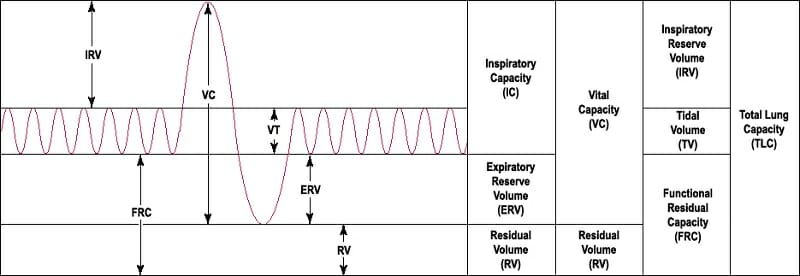In the field of respiratory physiology, the residual volume plays a crucial role. It represents the amount of air that remains in the lungs after maximal exhalation. However, despite its significance, measuring the residual volume is not a straightforward task.
Residual volume cannot be measured using spirometry. The reason lies in the nature of residual volume itself – it is the volume of air that cannot be exhaled. Let’s delve deeper into why measuring this volume poses a challenge.
Challenges in Measuring Residual Volume
Here are some key reasons why residual volume cannot be directly measured using spirometry:
- Residual volume is the air left in the lungs after maximal exhalation.
- This volume acts as a ‘reserve’ to prevent lung collapse.
- It is impossible to exhale this volume completely.
- Spirometry measures inspired and expired air volume but cannot account for air that remains in the lungs.
Due to these reasons, spirometry falls short when it comes to quantifying the residual volume accurately. Instead, other methods are employed to estimate this crucial parameter.

Credit: biologydictionary.net
:max_bytes(150000):strip_icc()/GettyImages-1177318902-e8bc4faa217240c680bc7e636470d259.jpg)
Credit: www.verywellhealth.com
Importance of Residual Volume
Despite the challenges in measuring it, residual volume holds great importance in the field of respiratory physiology. Here are a few reasons why RV is a key metric:
- Keeps alveoli inflated to maintain gas exchange efficiency.
- Contributes to calculating lung capacities for diagnostic purposes.
- Essential for diagnosing lung diseases like COPD and asthma.
The residual volume plays a vital role in understanding lung function and respiratory health, making it a crucial parameter to consider in pulmonary assessments.
Frequently Asked Questions
Why Can’t Residual Volume Be Measured?
The residual volume cannot be directly measured with spirometry. Spirometry measures the volume of air inspired and expired by the lungs, but the residual volume is the amount of air that remains in the lungs after maximal exhalation. It is impossible to completely exhale this volume of air, so it cannot be directly measured.
However, other methods can be used to calculate the residual volume and total lung volume.
Why Is It Difficult To Accurately Measure A Person’s Residual Volume?
Measuring residual volume is challenging as it’s the air left in the lungs after maximal exhalation, impossible to directly measure with a spirometer. This volume maintains lung patency and gas exchange. As a crucial component in lung function tests, it impacts the accuracy of measurements in diagnosing lung conditions.
Why Can’t Residual Volume Be Determined By Ordinary Spirometry?
The residual volume can’t be determined by spirometry as it is the air left in the lungs after maximal exhalation, requiring other methods for measurement.
Why Can T Residual Volume Be Measured Using Spirometry Quizlet?
Residual volume cannot be measured with spirometry because it is the air left in lungs after maximal exhaling.
Conclusion
While spirometry is a valuable tool for assessing lung function, it has limitations when it comes to measuring the residual volume. Understanding the challenges and importance of residual volume can enhance our insights into respiratory physiology and aid in diagnosing various lung conditions.
